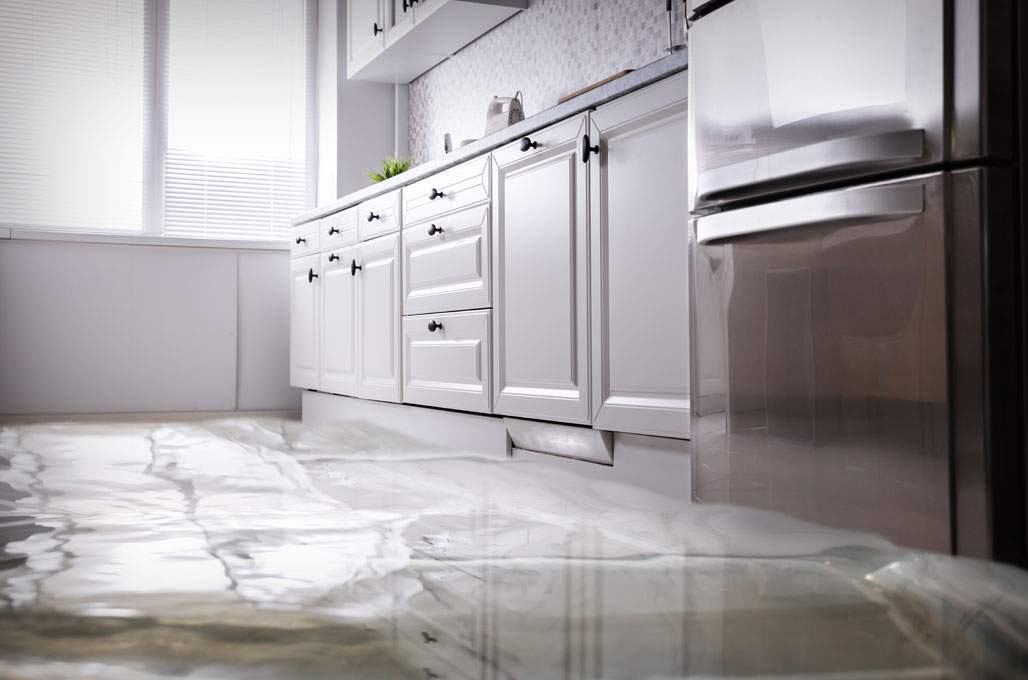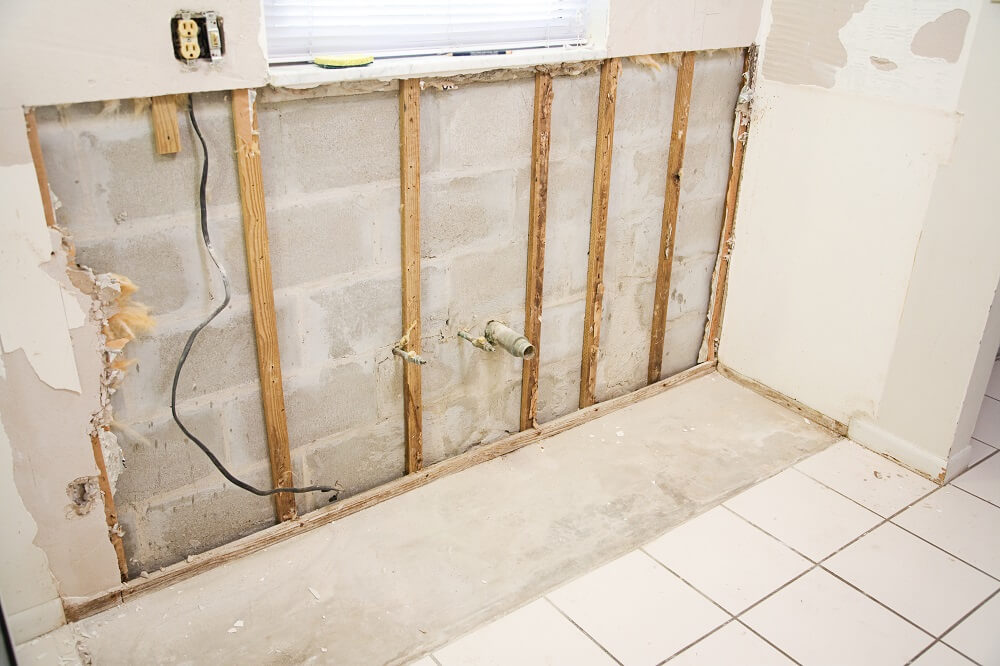Water Damage Restoration Specialists Ready to Fix Any Issue Fast
Water Damage Restoration Specialists Ready to Fix Any Issue Fast
Blog Article
The Refine of Water Damages Clean-up: Guaranteeing Your Home Is Recovered Successfully
Water damage can be an overwhelming difficulty for homeowners, requiring a careful and structured clean-up procedure to restore safety and security and functionality. A comprehensive evaluation is important to determine the degree of the damages and determine the suitable removal steps. Following this, efficient water extraction strategies play a pivotal duty in mitigating further harm. Nevertheless, the subtleties of drying, disinfecting, and ultimate reconstruction are equally vital and typically ignored. Understanding these stages can make a considerable difference in the outcome of your home's remediation, triggering a closer take a look at what each action requires.
Examining the Damage
Upon finding water damage, the very first step is to completely assess the extent of the impact. This preliminary analysis is critical, as it aids identify the needed actions for reliable clean-up and restoration. Begin by evaluating the affected areas, consisting of walls, ceilings, floors, and personal items, to identify the source of the water breach, whether from flooding, leaks, or condensation.
Documenting the damage is important for both insurance claims and intending reconstruction initiatives - damage restoration services. Usage photographs and written notes to capture the intensity of the damages, keeping in mind any damaged structural aspects and products. Pay unique attention to areas that may not be immediately visible, such as behind wall surfaces and under carpets, as hidden moisture can bring about further issues, consisting of mold and mildew growth
Additionally, examine the timeline of the water exposure. The longer the materials continue to be damp, the higher the capacity for damage. Understanding the duration of exposure will inform the necessity of removal initiatives. Eventually, a detailed evaluation lays the foundation for an effective water damages clean-up process, guaranteeing that all affected areas are resolved successfully and extensively.
Water Extraction Techniques

Specialists normally use completely submersible pumps for bigger quantities of water, which can quickly minimize flooding in basements or other affected locations. For smaller sized amounts, wet/dry vacuum cleaners are typically utilized to extract recurring wetness from carpets and tough surface areas. In addition, using portable extractors permits targeted removal in restricted areas or areas with delicate materials.
In instances of polluted water, such as sewage or floodwater, progressed removal techniques may include using biohazard tools to make certain safety and compliance with wellness laws. High-powered removal tools are critical in lessening water retention in architectural materials, which can bring about mold and mildew development and structural degeneration otherwise addressed immediately.
Ultimately, the performance of water removal methods plays a critical role in the overall success of the water damage cleaning process, preparing for succeeding reconstruction initiatives.
Drying and Dehumidification
Once standing water has been properly removed, the next essential phase in the water damages cleaning procedure is drying out and dehumidification. This action is vital to stop additional damages and mold development, which can take place within 24 to 2 days in damp settings.
To achieve effective drying out, specific tools such as industrial-grade air movers and dehumidifiers is used. Air moving companies distribute air throughout damp surface areas, enhancing evaporation prices, while dehumidifiers lower moisture levels airborne, promoting a helpful environment for Look At This drying out. The mix of these tools guarantees that moisture is extracted from furnishings, floorings, and walls, allowing them to dry extensively.
It is necessary to keep track of the drying process closely. Experts usually make use of dampness meters to examine the wetness material in various materials, ensuring that all impacted locations get to appropriate dryness degrees. This meticulous technique assists to stop surprise moisture pockets that can cause structural damages or harmful mold and mildew growth.

Cleaning and Sanitizing
After the drying out and dehumidification stage is full, the next vital step in water damages clean-up is cleaning up and sterilizing the affected locations. This process is crucial to avoid the development of mold and mildew, bacteria, and other pathogens that thrive in moist settings.
The cleaning stage generally involves getting rid of any kind of particles, dirt, and impurities from surfaces making use of specialized cleaning representatives. For hard surfaces, a combination of soap and water or business cleaning items is often used. Soft materials, such as upholstery and carpets, may call for much more extensive cleansing approaches, consisting of vapor cleaning or deep extraction techniques, to ensure detailed hygiene.

Disinfecting follows cleansing, making use of EPA-approved disinfectants to remove hazardous microbes. This action is essential, specifically in locations that may have entered into call with floodwaters or sewer, as these resources can pose severe health and wellness dangers.
In addition, it is essential to attend to any type of staying odors, which might call get more for making use of smell neutralizers or sophisticated methods like ozone therapy. Correct cleansing and sterilizing not just recover the safety and security and hygiene of your home yet also prepared for effective restoration and repair work in subsequent stages of the water damages cleanup procedure.
Repair and Fixings

Once the assessment is full, restoration efforts can start. This normally entails fixing or changing damaged materials, guaranteeing that all work follows local building ordinance and criteria. For example, if drywall has been endangered, it will certainly need to be removed and changed with new product. Additionally, flooring may call for comparable focus, relying on the degree of water direct exposure.
It is crucial to engage seasoned restoration specialists during this procedure, as they possess the experience to manage complicated fixings efficiently. They can help minimize possible future concerns, such as mold growth or structural instability, hence making certain a safe and habitable living atmosphere. Inevitably, reliable restoration and fixings restore the home's stability and enhance its general worth.
Final Thought
In final thought, the process of water damage cleanup is essential for restoring a home to its pre-damage problem. Each stage, from examining the damages to implementing effective water removal strategies, adhered to by complete drying out, sterilizing, and needed repair services, plays an essential duty in guaranteeing security and conformity with building criteria. Reliable implementation of these actions not just minimizes immediate damage however also improves the lasting honesty and worth of the residential property.
Water damages can be a challenging obstacle for home owners, demanding a organized and careful cleaning procedure to bring back security and functionality. Inevitably, a comprehensive evaluation lays the groundwork for a successful water damage cleanup procedure, guaranteeing that all impacted areas are dealt with effectively and completely.
Effective water extraction methods are necessary in minimizing damage and preventing additional issues following a water intrusion occasion.In verdict, the procedure of water damages clean-up is vital for recovering a home to its pre-damage problem. Each stage, from assessing the damages to applying effective water extraction techniques, followed by detailed drying out, sterilizing, and required repairs, plays a crucial role in making certain security and compliance with building standards.
Report this page